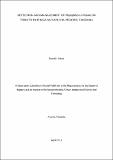Detection and management of phytophthora infestans on tomato in Iringa and Arusha regions, Tanzania
Abstract
A study was conducted in Iringa and Arusha regions of Tanzania to determine the status of the of Late blight disease (LBD) on tomato and effect of synthetic fungicides on the disease. Leaf samples with symptoms of the LBD were collected from three farms per village in each region, and transported to the Nelson Mandela African Institution of Science and Technology (NM-AIST) laboratory for detection of the LBD-causing pathogen(s). In addition, field trials were set in each region to find out the efficacy of chemical fungicides on LBD control. Moreover, extracts from Plectranthus barbatus, Sphaeranthus suaveolens, Lantana camara and Tephrosia vogelii were tested in-vitro for their effects on the LBD-causing Phytophthora. The results showed that, the LBD was present in the study locations. In addition, despite the application of different synthetic fungicides on tomato, the percentage LBD incidences and severities were higher ranging from 42.1, 52.60 and 49.56, 39.39 in Iringa and Arusha regions, respectively. Such results implied that synthetic fungicides used by farmers in the study area do not fully control the LBD. The results also showed that there was significant difference (p ≤ 0.001) between the effects of different plant extracts against the LBD. The crude extracts from P. barbatus, S. suaveolens and L. camara exhibited growth inhibition of P. infestans (in-vitro) almost similar with synthetic fungicide used as positive control. This study therefore, proposes P. barbatus, S. suaveolens and L. camara as candidates for further studies in developing alternative bio-fungicides against P. infestans in Tanzania.

